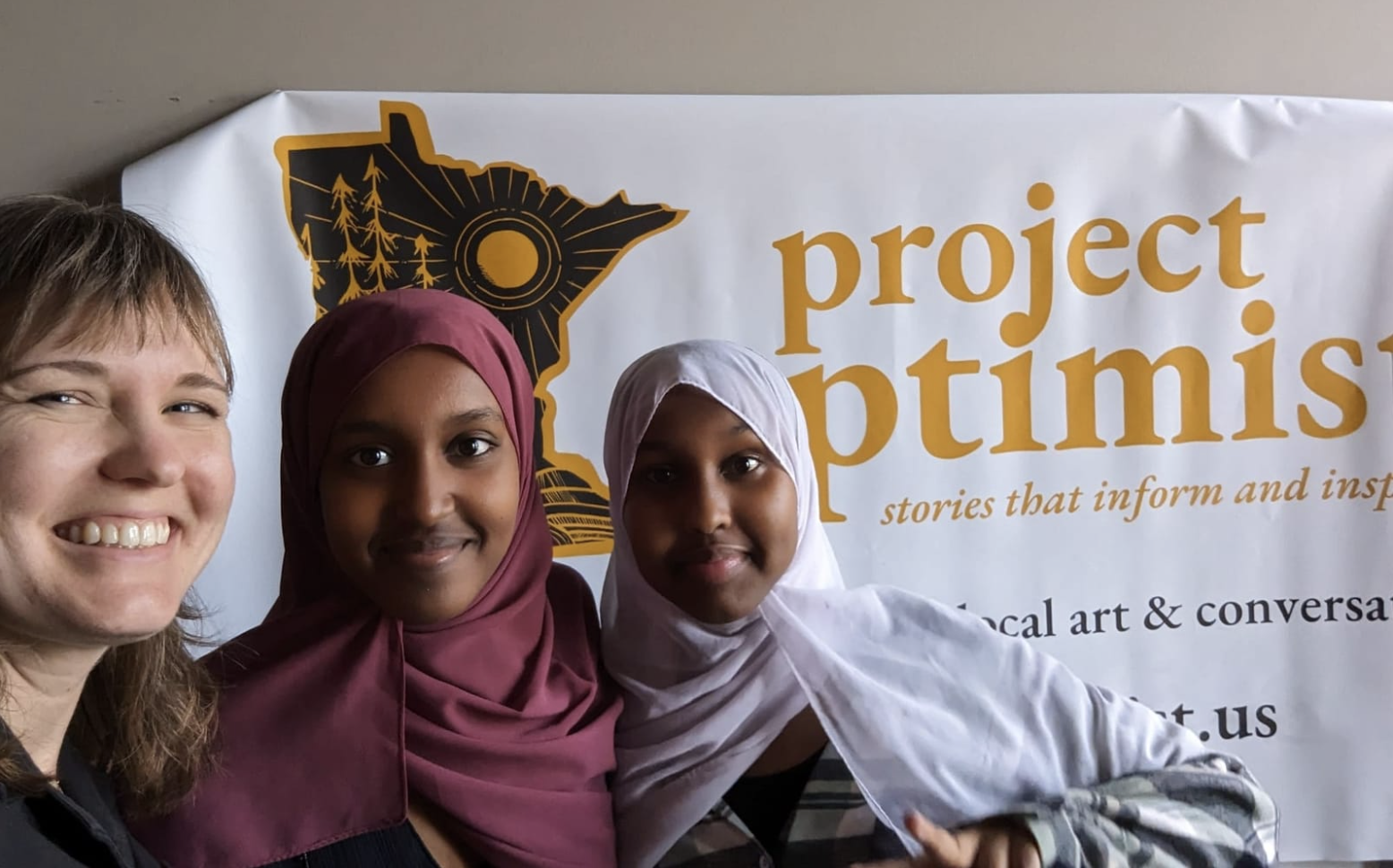
Tiny News Collective exists to support early-stage news entrepreneurs all across the United States who are raising their hands to provide community-focused news and information and places for community connection. We are who we are because of the founders we serve. And we want the journalism field, the civic information space and beyond to know about the creative, impactful work of these founders. To that end, we are thrilled to highlight their stories through an ongoing series of profiles and features.
For our inaugural piece, we begin with Nora Hertel and Project Optimist, a news outlet that takes its name seriously in doing solutions journalism to give people more agency in the news they read. As more and more people avoid the news because it’s so depressing, Project Optimist takes a different approach that engages people on a very human level.
My community in central Minnesota told me in 2021 that the news made them feel depressed, angry and frustrated. Those sentiments became themes in market research that has shaped Project Optimist every year since then.
Through the 2010s, I worked as a political and investigative reporter, primarily for daily newspapers in the upper Midwest. I endured many rounds of layoffs and declining trust in the news media. I struggled to produce public service journalism through burnout in an under-resourced newsroom. That's when I decided to create a digital, nonprofit newsroom starting in St. Cloud, Minnesota. I knew early on that I wanted to focus on greater Minnesota – the small cities and rural stretches of the state – where stories often went untold. After all, I live here.
Reader interviews and surveys led our team to pivot a few times as we developed Project Optimist. With the knowledge that many people disliked the news, I started to focus my vision on solutions journalism – rigorous and evidence-based reporting on responses to social problems. Art and aesthetics became important ingredients to engage my audience and to delight them. Our beats also reflect our audience needs: We strive to fill knowledge gaps on environmental, business and social issues in our region. Community events and engagement are another important part of the puzzle.
We've grown our audience a lot this spring, and we will soon launch our 2024 surveys to learn more about those subscribers. We’ll keep making tweaks and pivots to ensure we’re placing our audience first and meeting them where they are.
We published an in-depth series on the role of nuclear power in Minnesota’s transition to carbon-free energy by 2040. It was a huge lift and turned out six pieces full of insight, plus an original comic and illustrations. The reporter and I spoke on Minnesota Public Radio about those insights. The stories were republished across the state. We hosted a dialogue about the future of nuclear power. And I talked with a local chapter of the Citizens Climate Lobby. Members of that group had been using the series to inform and spur conversations with lawmakers about nuclear power and electricity production. The wide impact of the series and its usefulness to folks interested in carbon-free energy is a huge point of pride.
The McKnight Foundation recently provided us $100,000 for this year and next to support our operations. Last year McKnight helped us launch our community dialogue program with a $50,000 grant. These funds have been huge in helping us grow and stabilize in the last year. We’re so grateful!
I travel around the state to give pitches, network and otherwise connect with community members. One event in rural Minnesota brought together a lot of people in our target market, and I had a booth with our managing editor. I talked to dozens of people who lit up when I told them about solutions journalism and the work of Project Optimist.
People know that news is struggling right now. And it is really fun and gratifying to me to see them get excited when they learn about our work. At this same event, I met a few of our earliest supporters in person for the first time. It was a lovely day to bring in new subscribers and connect with old ones. And it reminded me that people need the work and vision we’re sharing with the region.
Our vision is very optimistic, but the path will not be easy. Project Optimist is working to engage more community members in civic life in order to mend divisions and help problem-solvers take on the huge issues of our day. Some of the problems we want to help our community chip away at include climate change, inequity, political polarization and social isolation. I think stories, art and conversations are the best tools to do this work.
While we’re at it, we’d like to delight our readers, rebuild trust in journalism, and model a healthy newsroom culture.
More specifically, our future will include a revamp of our newsletter, media literacy programming, media consulting for other nonprofits, collaborations with other newsrooms in the state, and a robust solutions journalism training program.
It’s such an exciting (and scary!) era for news. I’m so proud to be among other news founders facing the future with courage, rather than giving into cynicism.
Sign up for our monthly newsletter for ongoing updates, announcements, and resources for newsroom entrepreneurs.